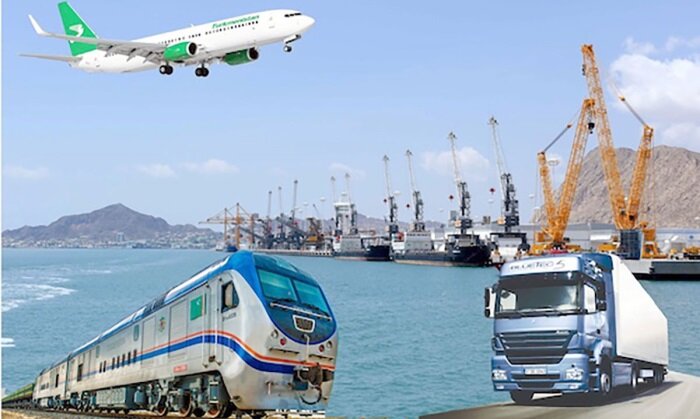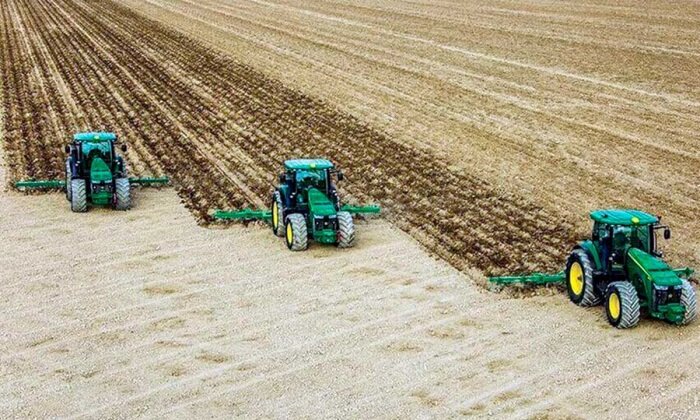Expert Trapeznikov noted that during the first 5 months of 2021, foreign trade turnover increased by 3,5%.
 This year, there are significant structural and positive quantitative changes in the indicators of foreign trade of Turkmenistan, according to the data of the State Statistics Committee of the country. The observer for Turkmenistan’s economy Valentin Trapeznikov told about this in an interview to CentralAsia.news.
This year, there are significant structural and positive quantitative changes in the indicators of foreign trade of Turkmenistan, according to the data of the State Statistics Committee of the country. The observer for Turkmenistan’s economy Valentin Trapeznikov told about this in an interview to CentralAsia.news.
Growth of foreign trade turnover
According to the results of the first 4 months, there was a decrease in foreign trade turnover and exports by 3,2% and 0,3% in comparison with the previous year, respectively, then in January-May, an increase in these indicators was registered.
Foreign trade turnover increased by 3,5%, and exports — by 7,8%, while imports decreased by 2,5%. This led to an increase in the positive balance of foreign trade in comparison with the previous year by 34,4%. The indicator for the analyzed period amounted to more than 1,129 million dollars.
Increase in export volumes
At the same time, the physical volumes of exports of natural gas increased by 31,6%, petroleum products — by 42,1%, gasoline from natural gas — by 64,4%, petroleum coke — 2.3 times, electricity — by 56,0%, fertilizers — by 13,8%, sulfur — 3.4 times, cotton yarn and fabrics — by 32% and 82,3%, respectively, clothing and other textile products — by 60,6%, wool — 2,4 times, plastic pipes, hoses and fittings — almost 5 times, household chemicals from plastics — 1.9 times, flour confectionery and sugar confectionery — 6.3 and 2.2 times, respectively, vegetables — 1.9 times, including tomatoes — 1.8 times, fruit and vegetable juices — 40%.
In addition to the above, Turkmenistan supplies the foreign market with crude oil, LNG, polypropylene, inorganic chemistry products, construction materials, cotton fiber, cottonseed cake, licorice root extract, fruits, and nuts, canned vegetables and fruits, and much more.
Thus, the structure of exported products is diverse and includes a wide range of oil and gas, fuel and energy, chemical, polymer, pharmaceutical, textile, construction, and food industries, as well as the agro-industrial complex.
Import substitution
Quite significant changes are also taking place in the structure of imported products. As already mentioned, in general, imports show a decrease in comparison with the previous year. It also applies to products for industrial and technical purposes.
In particular, the implementation of import substitution programs made it possible to reduce the supply of fertilizers from abroad by 3 times and raw materials by almost 18%. In addition, imports of building materials, oil products, and chemical products decreased.
The import of ferrous metals and products made of them has significantly decreased — almost 2 or more times in value and physical volume.
At the same time, a 26,2% increase in imports of technological equipment and mechanical devices was registered. The import of wood and ceramic products, as well as products from marble and granite, increased.
Import of food products
Imports of consumer goods as a whole decreased by 3,7%. At the same time, for food products, it decreased by more than 12%, and for non-food products, on the contrary, it increased by 1,2%.
The most significant decline in imports of condensed milk (1.5 times), cheeses (1.4 times), beef (3.2 times), poultry (1.7 times), rice (6.5 times), onions, and garlic (1.5 times), citrus (more than 2 times). The import of tomatoes and cucumbers is almost completely excluded.
Imports of butter and vegetable oil, canned fish, vegetable and fruit juices, cereals, coffee, and tea increased significantly.
Import of non-food products
The largest items of import within purchases of non-food products are pharmaceuticals, perfumery, cosmetics and detergents, furniture, air conditioners and refrigerators, clothing, and footwear.
Imports for medical equipment, optical instruments and apparatus, live animals, trees and plants, and compound feed decreased.
Thus, the structure of Turkmenistan’s foreign trade is undergoing significant changes, many of which are the result of the implementation of import substitution programs and an increase in the export of domestic products.
According to the results of five months of 2021, the largest foreign trade partners of the country are China, the Russian Federation, Turkey, the United Arab Emirates, Afghanistan, and Italy.
Earlier Trapeznikov emphasized that in January-April exports in Turkmenistan amounted to over 2.5 billion dollars. According to him, the decrease in the total volume of domestic exports was influenced by a decrease in the value of natural gas by 17,8% amid the coronavirus pandemic. In addition, the country has realized a reorientation of external procurement.
The head of the Union of Economists, Yuri Aronsky, said that since 2015, Turkmenistan has been implementing a 6.1 billion dollars state program to increase export volumes and a state program for the production of import-substituting products worth 176 million dollars. He drew attention to the fact that the country has achieved notable success in the export of tomatoes.





